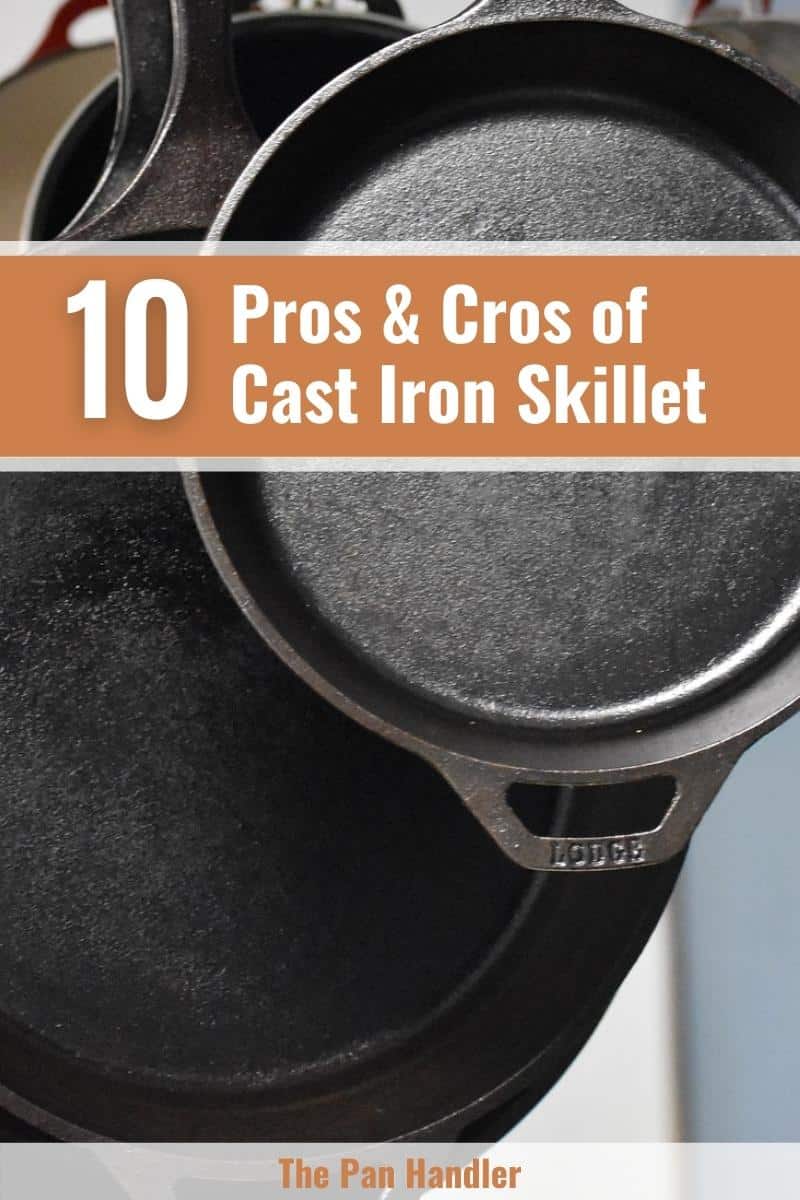With all there is available in pots and pans, few exceptions beat the versatility of the iconic cast-iron skillet. From its durability to heat retention and more, cast iron skillets are a must-have item. Read on for a better understanding of the benefits of cast iron skillet cooking.
This article will cover.
- Make the Most of the Versatility of Cast Iron Cookware
- How To Cook With Cast Iron Cookware
- Caring for Cast Iron Cookware
- Contrasting the Advantages and Disadvantages of Cast Iron Skillets
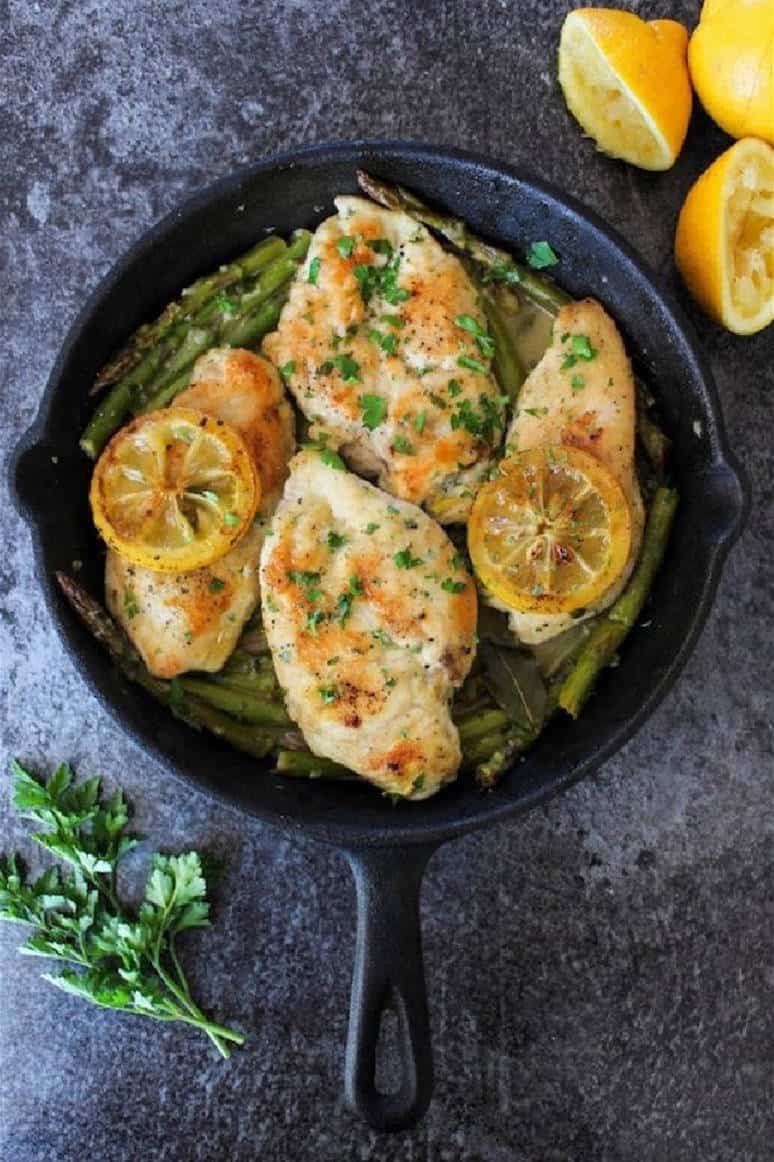
Make the Most of the Versatility of Cast Iron Cookware
There are many good reasons the cast iron skillet gets passed down through generations. These skillets get better with age when properly cared for and become a staple in the pantry. If you haven’t ventured into all the cast iron skillet can do for you, isn’t it about time you did?
For starters, it is one of the most inexpensive pieces you can add to your collection of cookware. It is called cast iron because it is made from molten iron that gets poured into a mold or cast. Most cast-iron pots and pans are made from a single piece of metal, which includes the handle.
Convenient potholders in either silicon, fabric or leather are available to protect your hands. They slip right over the handle for ease of use. You can use your cast iron skillet on the range top or in the oven. These pot handle covers make it easier for you to go from one to the other without getting burned.
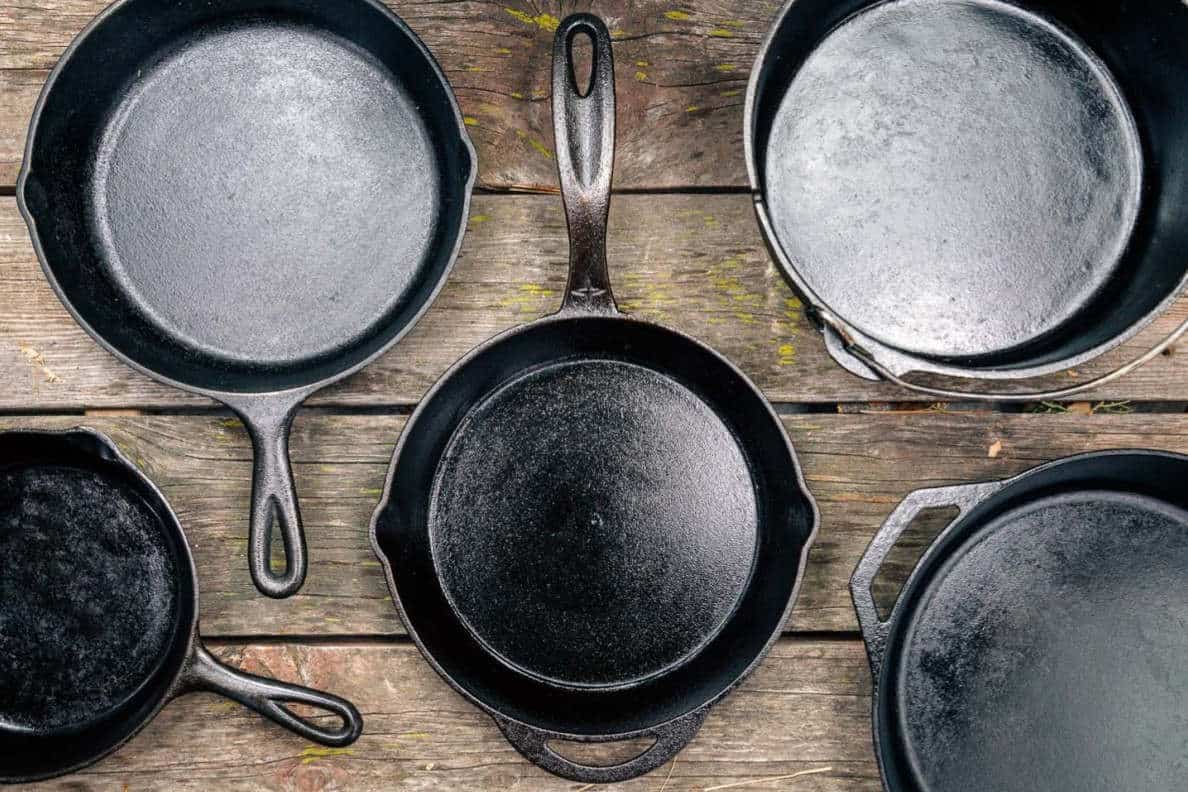
There are numerous recipes that call for transferring the food from the range to the oven. The cast-iron skillet allows you to do this without the need of transferring the food to another pan. There are no other components that you have to worry about being harmed in the heat from the oven.
Cast iron stores more heat per unit volume, which is what makes it so useful for:
- Searing
- Roasting
- Braising
- Deep frying
- Baking cakes
- Making pizza!
Over time, it also becomes a non-stick surface which makes it ideal for sautéing or cooking eggs. It certainly can be used for stir-frying, but you do not have the same maneuverability due to the weight.
Yes, the cast iron skillet is heavier than most pots and pans you have. You can make good use of how the density of cast iron affects what you are cooking. For instance, you can keep the food you are serving warmer longer while it remains in the pan. You can also use this heat retention to finish off cooking your food even when removed from the heat source.
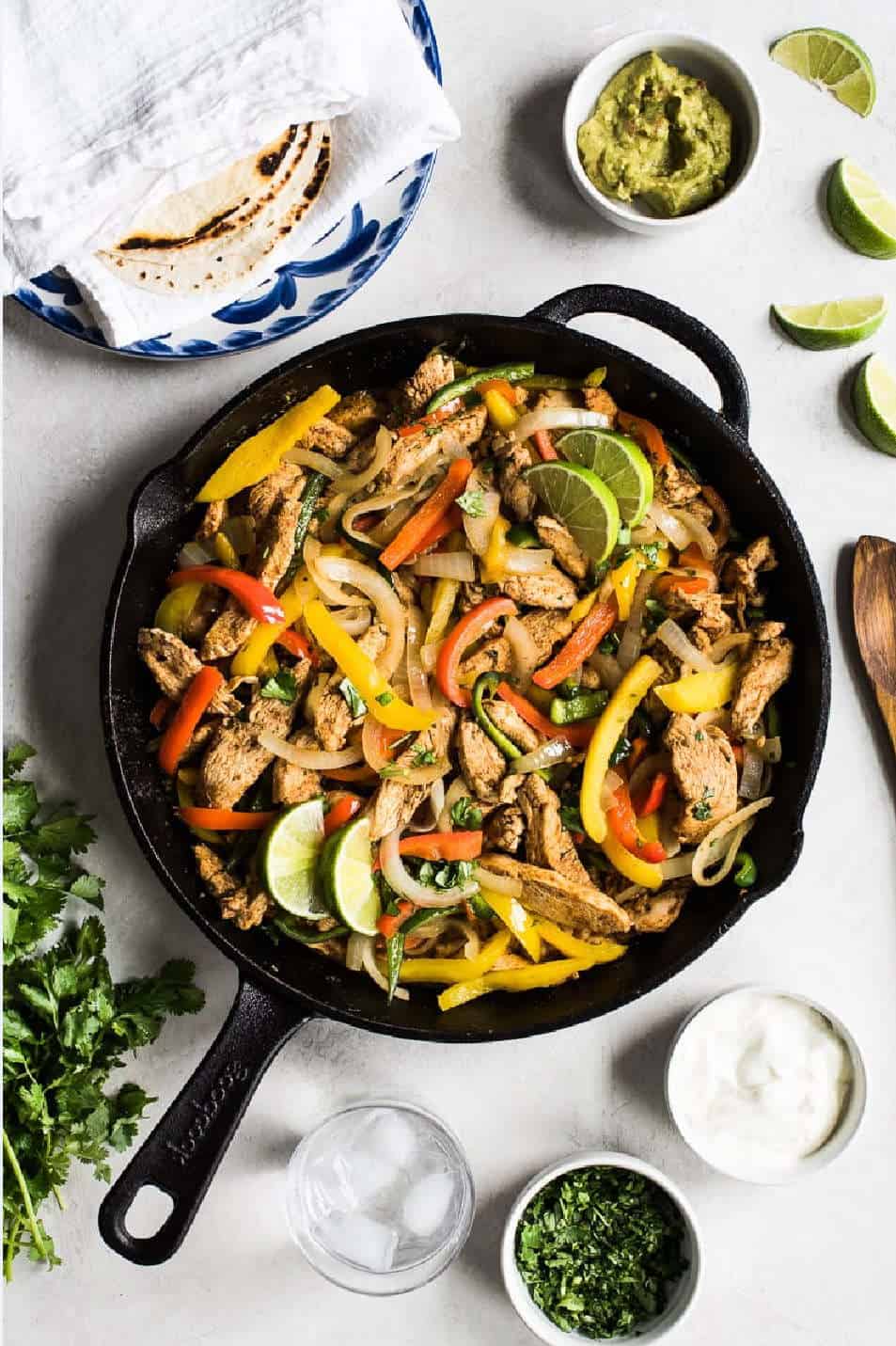
How To Cook With Cast Iron Cookware
Fundamental to the effectiveness of a cast-iron skillet is getting heat to the pan. Unlike all your other pans, the heat gets distributed to the entire cast iron skillet. Therefore, you either need a similarly sized burner or you can preheat it in the oven.
Cast iron does not respond to changes in heat as quickly as copper or stainless steel. Cast iron retains the heat longer. As a result, you need to learn the best ways to use this heat retention. Take searing steaks, for example.
It is possible to cook a steak with a nice crust on the outside that’s juicy on the inside. You can even maintain the cut medium rare on top of all that. Where normally you put the meat in a pan and don’t touch it, with cast iron you turn it several times. You will be astonished at the beautiful searing you can achieve with cast iron!
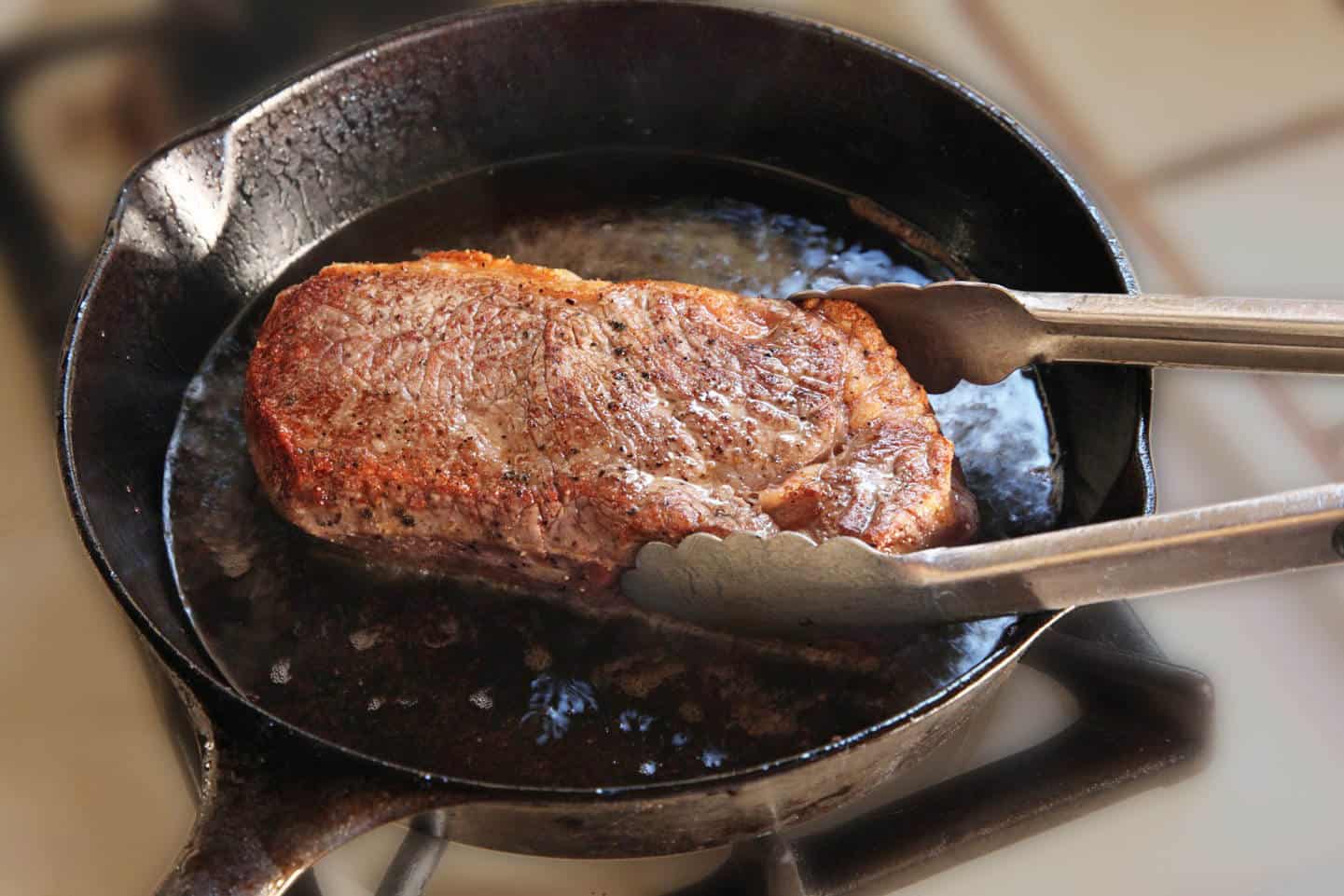
The heat distribution when stir-frying vegetables on the range top means a more thorough exposure to the heat. Then you can transfer them in the pan to the oven for roasting. You can achieve a higher level of control cooking with cast iron.
You don’t even need a pizza stone with cast iron. You can heat the pan in the oven first. Then when you use the pan to cook your pizza, the dough will achieve that beautiful crust. There won’t be any need to go to your local pizza parlor after that!
That is the trick with cast iron. Using oil or fat, cast iron is the best method for achieving the crisp that we all love so much. Whether it is pancakes, potatoes, meat, fish, pizza and more, the heat from the cast iron is ideal for crisping.
Typically, people are apprehensive about cooking eggs in a cast-iron skillet. When your pan is properly seasoned, which is covered next, your pan will be naturally non-stick. You can cook those eggs sunny side up like you never have before with your cast iron pan.
Here is a helpful video that explains more about the benefits of cast iron skillet cooking.
Caring for Cast Iron Cookware
Seasoning cast iron takes into account the nature of the material. The surface of your pan is porous and unevenly pocked making it susceptible to rust. Even when your pan is new, even when it claims it is pre-seasoned, you still want to do it yourself.
You will hear taboos about using soap on your cast iron. Let me assure you, it is safe as long as it is a mild soap. Some will tell you never to use steel wool, while others recommend its use for cleaning. Others have a method of using salt and water and then a scraper to remove any food matter when cleaning.
Any of these will work. The first thing you want to do is clean the pan. Let it cool first if you are cleaning after use. You must not immerse a hot cast iron skillet in or under cold water. This can shock the metal and possibly cause it to crack or warp.
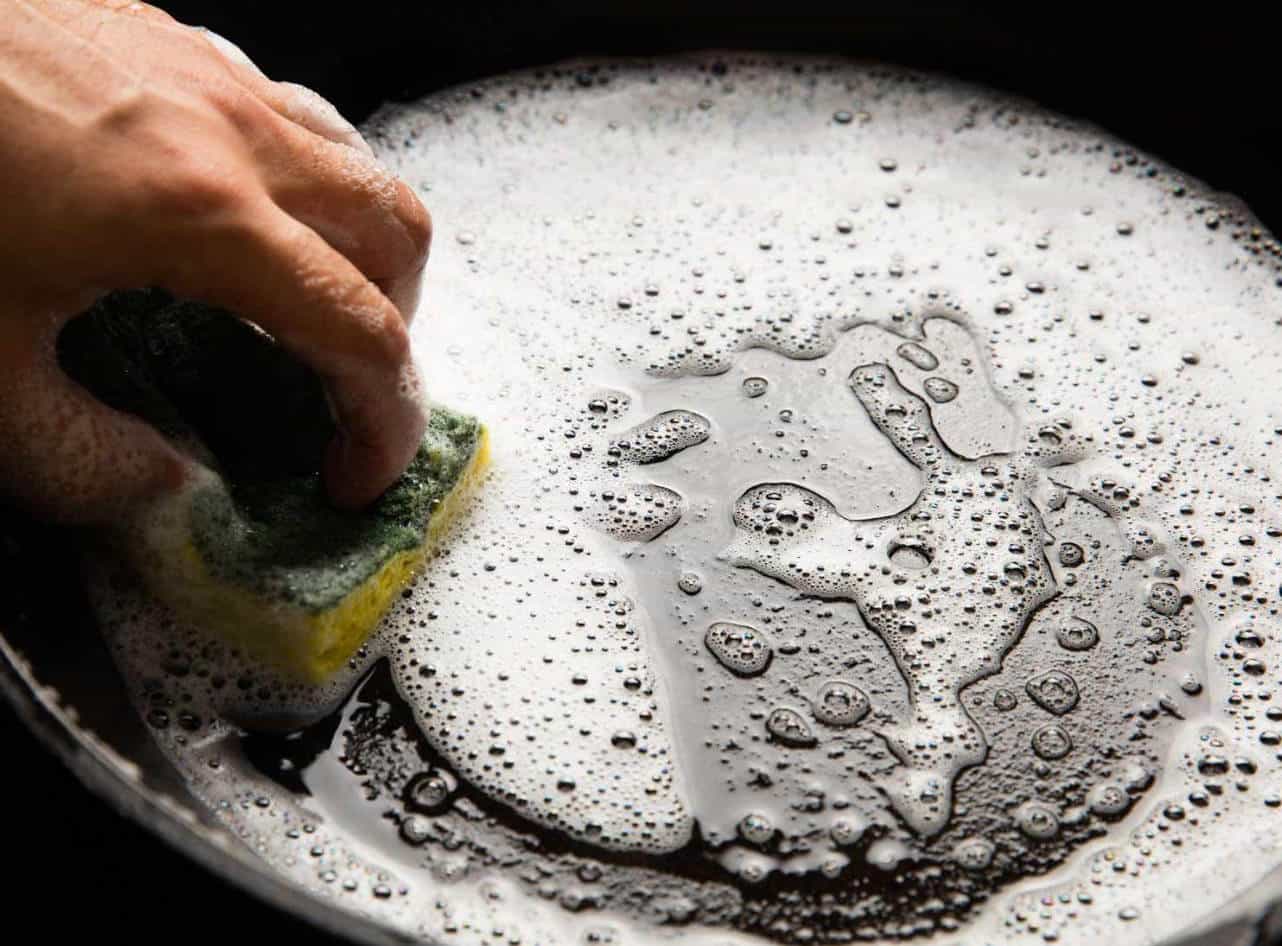
One of the best ways to clean your pan is to use a stiff nylon brush with mild soap. Certainly, you should avoid harsh detergents or lye. You can dry it with a towel and then place it on the hot stovetop to fully dry.
Once it is dry, use cooking oil to spread all over the entire pan, front to back, and the handle. You can use canola, grapeseed or coconut oils or lard. Some recommend using flaxseed oil as the best one, however, this can be price prohibitive for others. There are also dedicated tubes of seasoning oils available.
Wipe away as much of the oil as you can and place the pan back on the stove to burn off any excess. You want to get it to the smoking point. This simply means there is excess oil. If it is not wiped or burned off, it can become rancid. This is what makes a clean pan feel sticky.
With regular care and proper treatment, this is what will give your pan that gorgeous non-stick patina. For a more helpful visual, here is a video that shows you how.
Contrasting the Advantages and Disadvantages of Cast Iron Skillets
As with just about any cookware, there are good things and bad things we experience. With cast iron, there are certain considerations, so to help you, here are the comparisons:
Advantages of Cast Iron
- Affordability: Cast iron skillet comes in a variety of sizes and styles. There are pots and pans and Dutch ovens. The advantage is they are all very affordable. One does not need to unload thousands of dollars to gain the essential items.
- Durability: There is a reason cast iron skillets are passed down through the generations. They last forever! They improve with age. With the proper care, they easily become a favorite cooking utensil.
- Naturally non-stick: The greatest advantage of cast iron is the non-toxic, non-stick surface when properly seasoned. We have finally been apprised of the danger of chemical treatments to make pans non-stick. Cast iron is a safe alternative.
- Heat retention: Cast iron is ideal for heat distribution and heat retention when properly heated. The thickness of the material holds the heat, unlike any other pan you have. Keep meals warm and even finish off the cooking process in your cast iron skillet.
- Versatility: You can cook anything in your cast iron that you cook with other utensils. There are warnings about using cast iron to cook tomato sauce. Avoid cooking food with acidic content, as it can leach into the porous surface.
Disadvantages of Cast Iron
- Heavy: Possibly the most common complaint is how heavy these pans are. That is what also makes them so great! With a decent potholder and two hands, though, you can do it. Keep this in mind when selecting the size of your pan. The bigger it is, the heavier it will be.
- Poor heat conductors: Cast iron needs even exposure to the heat or else enough time on a burner to get the whole pan hot. You can either use a burner of the appropriate size or preheat the pan in the oven. Remember, you do not want to put your food in the pan before it has warmed to the appropriate temperature.
- The handles get hot!: Given the single casting, a hot-to-the-touch handle is unavoidable. There are pot-handle holders designed to slip right on. Just remember to remove them if you place your pan into the oven. Oven mitts and dish towels also serve to protect you from heat.
- Cast iron requires extra care: Seasoning is essential. However, keeping up with this not only makes cleaning your pans so much easier, but it will also keep the surface non-stick.
- Susceptible to rust: With proper care and seasoning, rust is totally avoidable. A properly seasoned pan has that beautifully cultured patina; a shiny, black, non-stick, clean surface.
In Conclusion
There are huge advantages to adapting your cooking skills to include cast iron cooking. It is the purely non-toxic, naturally non-stick cooking utensil you will cherish from the moment you try it. Hopefully, the information shared here has helped you understand the benefits of a cast iron skillet.
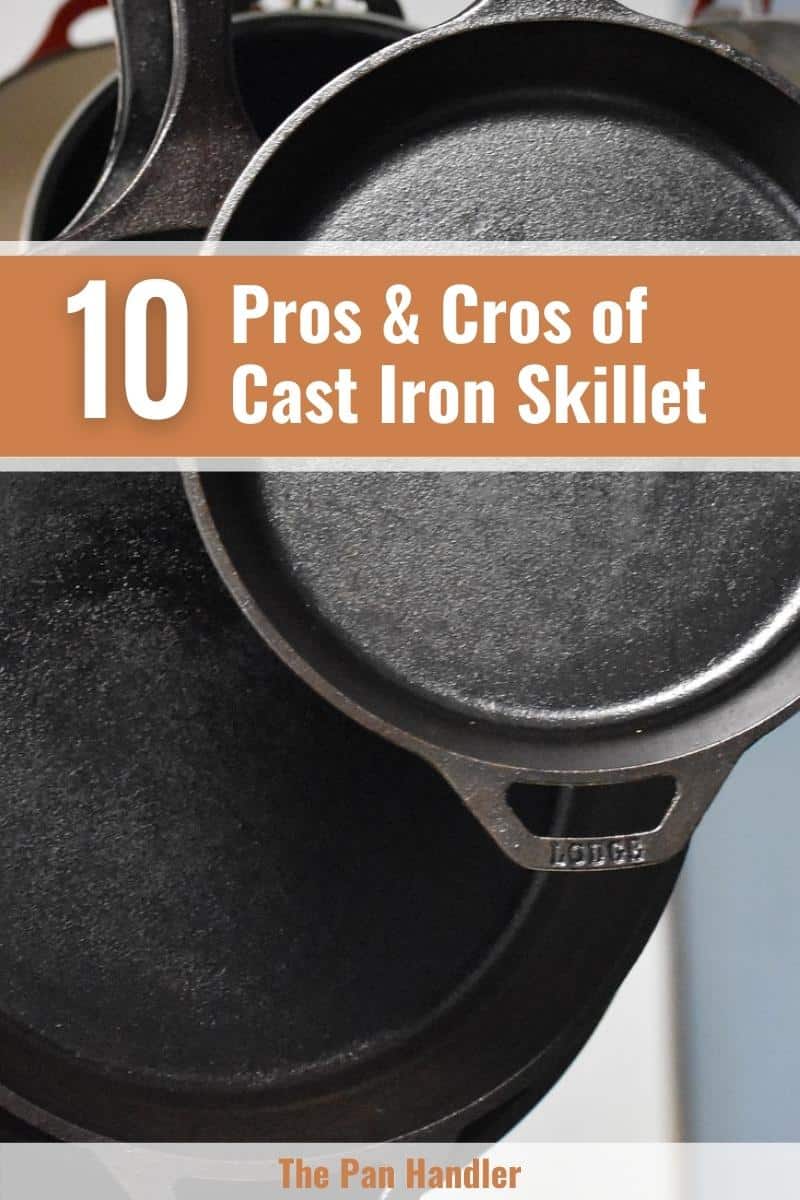

Michael Johnson is the founder of The Pan Handler, Inspired by his blacksmith grandfather’s legacy has a deep appreciation for hand-crafted pots and pans, he provides invaluable guides, reviews, and recipes to enhance your culinary journey.

